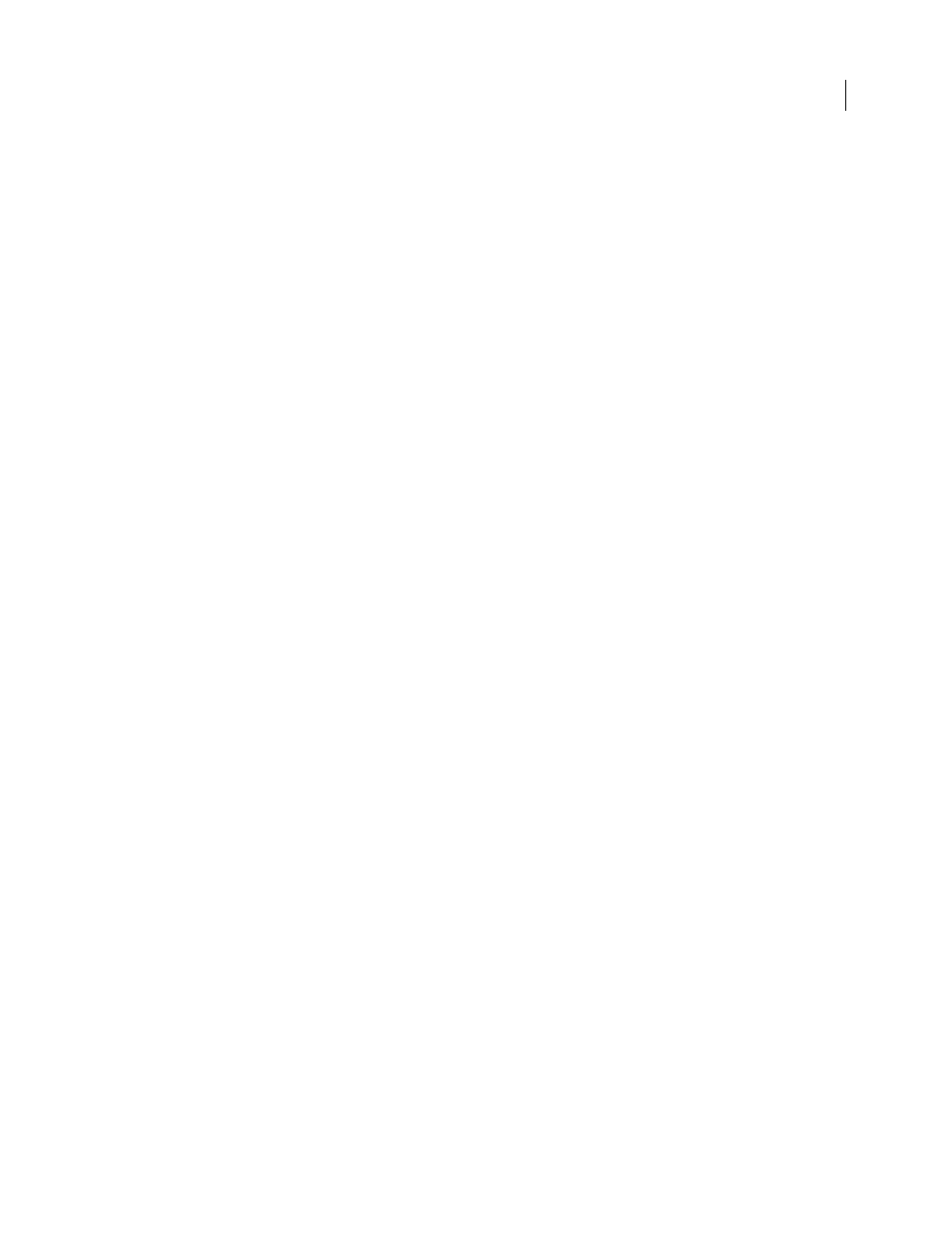Adobe Illustrator CS3 User Manual
Page 177

ILLUSTRATOR CS3
User Guide
171
Stylus Wheel
Creates a brush that varies in diameter based on manipulation of the stylus wheel. This option is
available only if you have a graphics tablet that can detect the direction in which the pen is tilted.
Tilt
Creates a brush that varies in angle, roundness, or diameter based on the tilt of a drawing stylus. This option is
most useful when used with Roundness. It is available only if you have a graphics tablet that can detect the direction
in which the pen is tilted.
Bearing
Creates a brush that varies in angle, roundness, or diameter based on the pressure of a drawing stylus. This
option is most useful when used to control the angle of calligraphic brushes, especially when you’re using the brush
like a paintbrush. It is available only if you have a graphics tablet that can detect how close to vertical the pen is.
Rotation
Creates a brush that varies in angle, roundness, or diameter based on how the drawing stylus pen tip is
rotated. This option is most useful when used to control the angle of calligraphic brushes, especially when you’re
using the brush like a flat pen. It is available only if you have a graphics tablet that can detect this type of rotation.
Scatter brush options
Size
Controls the size of the objects.
Spacing
Controls the amount of space between objects.
Scatter
Controls how closely objects follow the path independently on each side of the path. The higher the value,
the farther the objects are from the path.
Rotation
Controls the angle of rotation of the objects.
Rotation Relative To
Sets the angle of rotation for scattered objects relative to the page or the path. For example, if
you select Page, at 0˚ of rotation, objects point to the top of the page. If you select Path, at 0˚ of rotation, objects are
tangent to the path.
The pop-up list to the right of each option lets you control variations in the shape of the brush. Select one of the
following options:
Fixed
Creates a brush with a fixed size, spacing, scattering, and rotation.
Random
Creates a brush with random variations in size, spacing, scattering, and rotation. Enter a value in the
Variation text box to specify the range within which the brush characteristic can vary. For example, when the
Diameter value is 15 and the Variation value is 5, the diameter can be 10, or 20, or any value in between.
Pressure
Creates a brush that varies in angle, roundness, or diameter based on the pressure of a drawing stylus. This
option is available only if you have a graphics tablet. Enter a value in the rightmost text box, or use the Maximum
slider. Pressure uses the Minimum value for the lightest tablet pressure and the Maximum value for the heaviest
pressure. When you choose this setting for Diameter, the heavier the stroke, the larger the objects.
Stylus Wheel
Creates a brush that varies in diameter based on manipulation of the stylus wheel. This option is
available only if you have a graphics tablet that can detect the direction in which the pen is tilted
Tilt
Creates a brush that varies in angle, roundness, or diameter based on the tilt of a drawing stylus. This option is
most useful when used with Roundness. It is available only if you have a graphics tablet that can detect the direction
in which the pen is tilted.
Bearing
Creates a brush that varies in angle, roundness, or diameter based on the pressure of a drawing stylus. This
option is most useful when used to control the angle of brushes. It is available only if you have a graphics tablet that
can detect how close to vertical the pen is.
Rotation
Creates a brush that varies in angle, roundness, or diameter based on how the drawing stylus pen tip is
rotated. This option is most useful when used to control the angle of brushes. It is available only if you have a graphics
tablet that can detect this type of rotation.